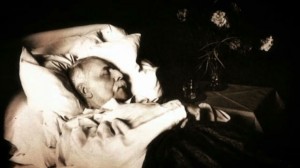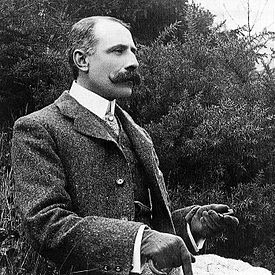by Sedgwick Clark
The Philadelphia Orchestra had the reputation in the Ormandy days of a well-oiled machine that played in a predictably beautiful, glossy manner no matter the maestro. Ormandy’s successor, Riccardo Muti, sought to change the corporate Philadelphia Sound into a “composer’s sound” (and now he’s saying that again about his current American orchestra, Chicago). To my ears, the result was a recognizable Muti Sound, evident in his conducting of the New York and Vienna philharmonics, as well: emphasis of high frequencies, reduction of lows, de-emphasis of strings, rather grainy textures, and, above all, strait-jacketed rhythmic control. Muti’s successor, and an Ormandy admirer, Wolfgang Sawallisch, gloriously restored the old Philadelphia Sound. His successor, Christoph Eschenbach, retained his own haphazard, Germanic sound, and Charles Dutoit gave the orchestra a glistening Franco-Russian accent.
The orchestra’s new music director, Yannick Nézet-Séguin, has by all reports captured the Philly audiences’ hearts, and I’ve blogged approvingly twice about his Philly concerts at Carnegie Hall (10/25/2012 and 2/28/2013). He’s an exciting guy, and I was looking forward to hearing what he would do with a pair of Philadelphia specialties at Carnegie Hall on December 6. But a sinus-related illness prevented him from travelling. In his stead, the orchestra snagged Michael Tilson Thomas, who elicited unfailingly excellent playing. Hélène Grimaud was scheduled for Brahms’s Piano Concerto No. 2 with YN-S but switched to No. 1 with MTT. She turned in a strong, relatively straightforward interpretation—far preferable to her exceedingly lethargic recording with Kurt Sanderling for Teldec several years ago. Thomas’s accompaniment, like much of his work these days (see my blog, “Whatever Happened to MTT,” 11/15/13), was overly refined for such a stern piece, especially in the turbulent opening movement. His tempos for Berlioz’s Symphonie fantastique were well chosen and the playing beautiful, but the music’s delirium was kept on too short a leash for my taste (and where were those deliberately vulgar blats of the lower brass in the Marche to the Scaffold?). Inclusion of the first- and fourth-movement repeats was welcome, but I missed the cornet in the second movement—“apparently added to [the manuscript] at some point after the completion of the symphony,” writes Edward T. Cone, editor of the Norton Critical Score—which adds such color and vivacity to Colin Davis’s recordings.
Ligeti in the Lake
Last week I tuned into the middle of a 1946 noir film called Lady in the Lake on TCM. Robert Montgomery stars as the detective Philip Marlowe and also directed. Interestingly, the music score is a cappella choral vocalise, composed by Maurice Goldman, who, according to IMDb.com, is credited only as “Choral Director.” At about 68 minutes into the film, Marlowe leaves the murdered Florence Elmore’s parents’ home, gets into his car, and starts driving. The background music wells up, and darned if it doesn’t sound strikingly similar to the Kyrie from Ligeti’s Requiem (1963-65), which Stanley Kubrick used in 2001 to underscore the appearance of the monolith.
One of my consultant film experts says that Lady in the Lake was popular internationally. I wonder if Ligeti’s yen for the macabre extended to Hollywood noir?



